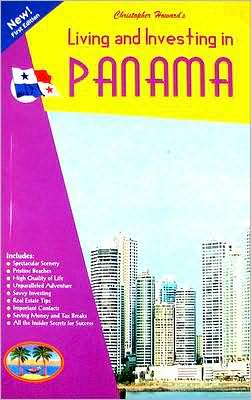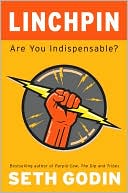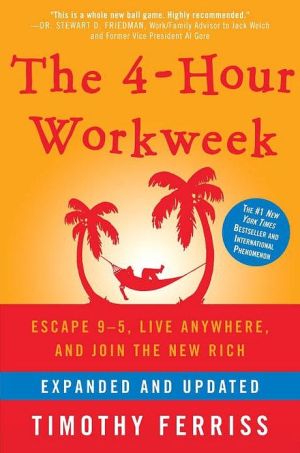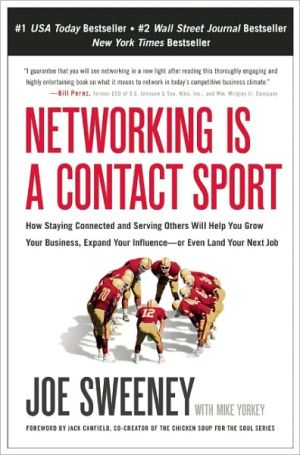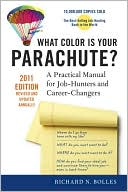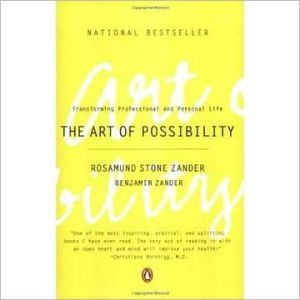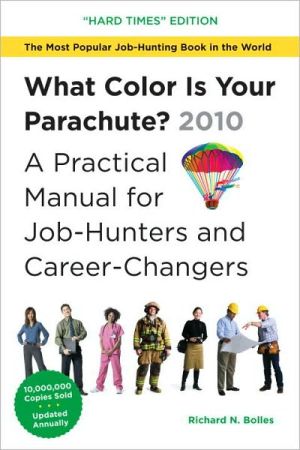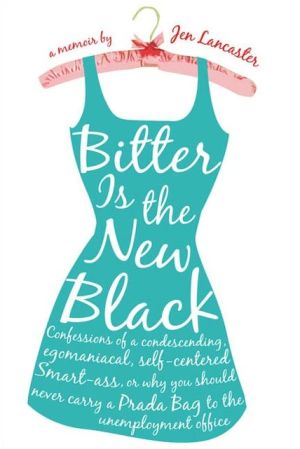Living and Investing in the New Panama: A Guide to Living and Investing in the Panama of the New Millennium
Search in google:
LIVING AND INVESTING IN PANAMA\ A guide to inexpensive living, retirement and making money in Central America's most overlooked country \ \ By CHRISTOPHER HOWARD \ Costa Rica Books\ Copyright © 2006 Editora de Turismo Nacional, S.A.\ All right reserved.\ ISBN: 978-1-881233-12-1 \ \ \ Contents\ FOREWORD....................................................................xiii CHAPTER I PANAMA'S LAND, HISTORY AND PEOPLE................................1 THE LAY OF THE LAND.........................................................1 MAPS........................................................................3 WEATHER.....................................................................5 WHERE TO LIVE IN PANAMA.....................................................6 A ONE-OF-A-KIND TOUR........................................................22 PANAMA'S HISTORY IN BRIEF...................................................24 GOVERNMENT..................................................................28 ECONOMY.....................................................................29 THE PEOPLE..................................................................31 CHAPTER II SAVING MONEY IN PANAMA..........................................33 HOW MUCH DOES IT COST TO LIVE IN PANAMA?....................................33 TIPPING.....................................................................39 MONEY.......................................................................39 BANKING IN PANAMA...........................................................39 HOUSING AND REAL ESTATE INVESTMENTS.........................................53 AFFORDABLE HIRED HELP.......................................................64 HEALTH CARE.................................................................67 INSURANCE...................................................................73 TAXES.......................................................................73 PANAMANIAN OFFSHORE CORPORATIONS............................................77 PANAMANIAN INTEREST FOUNDATIONS.............................................80 CHAPTER III MAKING MONEY IN PANAMA.........................................81 INVESTING IN PANAMA.........................................................81 PANAMA'S STOCK MARKET.......................................................87 FINDING WORK................................................................94 STARTING A BUSINESS.........................................................96 COMMON BUSINESS SENSE.......................................................101 PROTECTING FOREIGN INVESTMENT IN PANAMA (Law 54)............................105 CHAPTER IV RED TAPE........................................................117 DEALING WITH BUREAUCRACY....................................................117 HOW TO BECOME A LEGAL RESIDENT OF PANAMA....................................118 Additional Methods of Applying for Panamanian Residency.....................122 IMMIGRATION AND OTHER MATTERS...............................................125 Visas.......................................................................125 Extending Your Stay.........................................................125 Leaving the Country.........................................................126 Work Permits................................................................126 Perpetual Tourist...........................................................127 Panamanian Citizenship......................................................127 Getting Married and Fiancee Visas...........................................128 PURCHASING AN AUTOMOBILE....................................................129 DRIVING AN AUTOMOBILE TO PANAMA.............................................130 BRINGING YOUR BOAT TO PANAMA................................................133 SHIPPING YOUR HOUSEHOLD GOODS...............................................134 WAYS TO BRING YOUR BELONGINGS...............................................135 HOW TO FIND A LAWYER........................................................137 PANAMANIAN CONSULATES AND EMBASSIES ABROAD..................................141 EMBASSIES AND CONSULATES IN PANAMA..........................................148 CHAPTER V KEEPING BUSY AND HAPPY IN PANAMA.................................151 SOME SOUND ADVICE...........................................................151 ENGLISH BOOKS NEWSPAPERS AND MAGAZINES......................................152 TELEVISION AND RADIO........................................................154 VIDEO RENTALS...............................................................157 SHOPPING....................................................................158 PANAMANIAN PASTIMES.........................................................161 BASEBALL AND BOXING.........................................................163 GOLF IN PANAMA..............................................................163 MUSEUMS AND ART GALLERIES...................................................165 WATER SPORTS................................................................166 PARKS FOR NATURE LOVERS.....................................................169 WHERE TO MAKE NEW FRIENDS...................................................170 LOVE AND PERMANENT COMPANIONSHIP............................................171 THE WILDSIDE OF PANAMA......................................................177 NIGHTLIFE AND ENTERTAINMENT.................................................179 GAMBLING....................................................................181 MOVIES AND THEATERS.........................................................182 CHAPTER VI COMMUNICATIONS..................................................185 TELEPHONE AND INTERNET SERVICES.............................................185 MAIL SERVICE................................................................188 RECEIVING MONEY FROM ABROAD.................................................189 PRIVATE MAIL SERVICES.......................................................190 CHAPTER VII EDUCATION......................................................193 HOW TO LEARN SPANISH........................................................193 PANAMA'S UNIVERSITIES.......................................................202 PRIVATE SCHOOLS.............................................................206 CHAPTER VIII GETTING AROUND................................................211 AIR TRAVEL TO, IN AND AROUND PANAMA.........................................211 TRAVELING BY BUS IN PANAMA..................................................213 BUS TRAVEL TO AND FROM PANAMA...............................................214 PANAMA'S TAXIS..............................................................215 AUTOMOBILE RENTALS..........................................................217 DRIVING IN PANAMA...........................................................217 KEEPING YOUR BEARINGS STRAIGHT..............................................220 MAP OF DOWNTOWN PANAMA CITY.................................................221 BOAT TRAVEL.................................................................222 CHAPTER IX MORE HELPFUL INFORMATION........................................223 WHERE TO FIND AFFORDABLE FOODS..............................................223 RESTAURANTS.................................................................226 RELIGION....................................................................229 PANAMA'S HOLIDAYS...........................................................229 BRINGING YOUR PETS TO PANAMA................................................230 UNDERSTANDING THE METRIC SYSTEM.............................................233 CHAPTER X PARTING THOUGHTS AND ADVICE......................................235 PERSONAL SAFETY IN PANAMA...................................................235 LIFE AS AN EXPATRIATE.......................................................239 STEPS FOR IMPORTING A HANDGUN...............................................244 INFORMATION ABOUT LIVING IN PANAMA..........................................248 SUGGESTED READING...........................................................250 SPANISH SURVIVAL VOCABULARY.................................................253 IMPORTANT PHONE NUMBERS.....................................................257 PANAMANIAN CORPORATION LAW..................................................258 INDEX.......................................................................279 \ Chapter One\ PANAMA'S LAND, HISTORY AND PEOPLE\ The Lay of the Land\ Panama is the southernmost country in Central America. It occupies an area of about 30,000 square miles which is about the size of South Carolina. Bordered by Costa Rica to the west and Colombia to the east, it is a long narrow country in the shape of a horizontal S. The country is between 50 and 120 miles wide and is bounded on each side by 477 miles of Caribbean and 767 miles of Pacific coastline. Thus, the country has almost endless coastline on both sides for beach lovers. The isthmus of Panama is the narrowest land mass between the Atlantic and the Pacific Oceans. The narrowest point being about 35 miles wide. The Panama Canal which is about 60 miles long and divides the country into eastern and western regions.\ A mountain chain stretches almost the entire length of the country. The highest peaks of this range are in the west. Volcán Barú in western Chiriquí Province is the highest point in the country. The country also has around 500 rivers which empty into the Caribbean and Pacific.\ Panama also has a large number of islands scattered on both sides of the isthmus. The two main island groups, both on the Caribbean side, are the Bocas del Toro and San Blás Archipelagos.\ Due to its climate Panama has a wide variety of animal and plant life. Panama's lush verdant forests contain the greatest number of species of all the new world's countries north of Colombia. Thirty percent of the country's total land is set aside for conservation.\ Politically Panama is divided into nine provinces two Indian territories (Comarcas): Bocas del Toro, Coclé, Chiriquí, Darién, Herrera, Los Santos, Panama, Veraguas and the Comarcas of Kuna Yala and Emberá.\ Weather\ Panama has a tropical climate since it lies so near the equator. Its weather is pleasant year round with temperatures remaining constant. So, most of the time you'll be able to dress in lightweight clothing . A jacket may be needed at some of the higher elevations. Don't forget your umbrella for the rainy season. U.S. style rain gear is too warm and cumbersome for the tropics.\ Temperatures vary little from season to season and fluctuate with altitude. Weather can also vary due to location. The higher you go, the colder it gets, and the lower you go the warmer it is. The sea-level temperature is around 80 to 85 degrees F. (27 degrees C.) most of the year. The Atlantic side tends to receive more rain. The weather on the Pacific side of the country is to be drier both on the coast and in the mountains.\ Like the rest of Central America, Panama only has two seasons. The summer or verano is generally from late December to mid-April with March and April being the warmest months of the year. The rainy season or invierno, runs from mid-April to December. However, there is plenty of sunny weather during the rainy season.\ During the wet season, many mornings are sunny and clear with only a few hours of rain in the afternoons. Since the temperature varies little, the wet months are usually as warm as the dry months. It is unusual to have two or three days of continuous rainy weather in most areas of the country. October is usually the rainiest month of the year.\ Foreigners should not let the rain get them down since there are a variety of indoor activities available. Panama City has many museums, theaters, malls, casinos, roller skating rinks, Internet Cafés and other indoor activities that will more than keep you busy when it rains.\ Where to Live in Panama\ Panama City is the country's capital and definitely place for those who like the stimulation of living in a modern cosmopolitan metropolis. It is home to more than half of the country's population and a bustling center of international banking and commerce. The original city was founded the the Spaniard Pedro Arias Dávila in 1519.\ Panama City runs about 7 miles along the Pacific Coast, with Panama Bay (La Bahía de Panamá) on the south, the Panama Canal on the west and the ruins of Panamá la Vieja to the east. Most avenues run parallel to the coast with streets running perpendicularly.\ Modern day Panama City boasts a wide range of architecture, from stately 16th century homes in Casco Viejo, the oldest part of the city, to the city's imposing Miami-like string of high-rise buildings. Prestigious neighborhoods like Alto de Golf, Dos Mares abound with greenery and flowers. Other areas as Obarrio, Campo Alegre, Paitilla and El Cangrejo teem with interesting buildings and designs.\ The city's other treasures include a palm-lined Malecón (waterfront promenade) the historic ruins of Panama la Vieja and much more. There is even a rainforest reserve within the city limits at Parque Metropolitano.\ Panama City has perhaps the best shopping in Central America. Therefore it attracts visitors from neighboring countries. Due to a long-time U.S. presence in the country, American products are easily found. Prices are similar to what they are in the States. Foreign residents can find many products from their home town. There are dozens of shopping centers to meet your needs. The stores that dot the Avenida Central pedestrian mall and Vía España offer first-class shopping. Thanks to low import duties, shoppers can find incredible bargains.\ There is no shortage of urban amenities in Panama City. Panamanians love nightlife and there are numerous establishments where you can always find some action. In addition, the city offers more than 300 international restaurants, modern supermarkets, theaters, movie theaters, discos, bars, cabarets, casinos and more.\ Familiar spots like TGI Fridays can even be found here. Entertainment costs about half the price you would pay in any U.S. city. Visitors remark that the city reminds them of Miami but prices are much more reasonable.\ For sports enthusiasts there is an American-style golf and country club located near the city. Nature lovers will find rainforests and beaches nearby.\ The city's infrastructure is excellent. This is primarily due to the long U.S. presence in the area. Most streets in the city are paved with concrete instead of asphalt. The downtown area has a real first-world ambience. Tocumen International Airport is located about 20 miles from downtown Panama City. It is easy to get around the city by using taxis and public transportation.\ Here are some of the areas where you might want to consider living, taking different tastes and budgets into consideration. A three bedroom apartment in Panama City can be purchased for under $100,000; a home on a former military base may cost $70,000 to $150,000; and a new condo in a high rise in Punta Paitilla will go for around $150,000 to $175,000. Land in the countryside or a small town is much less expensive.\ Panama City is divided into a series of neighborhoods. The city's old section, Casco Viejo or 'old city", was founded in 1673 as a fort. It is the historic center of today's capital. Casco is a quite charming district of narrow streets overlooked by balconies of two and three storied houses. The facades of many of the buildings, with their wrought-iron balconies appear to be frozen in time. This area has cobblestone streets and rich ethnic diversity. At its tip lies French Park, the lovely French Embassy, a monument to the French builders who began the Panama Canal,. The area has three basic styles of architecture: Spanish, Italian and French. The latter style reminds many , including the author of New Orlean's French Quarter.\ There has been some gentrification in this area with many of the old buildings restored to their former splendor. Enterprising entrepreneurs are beginning to realize this area's potential and are renovating homes. Many homes have been converted into trendy restaurants. Las Bóvedas, a prime example of the restoration process, is a French restaurant located in a former colonial jail in Casco Viejo.\ The government is even offering incentives to encourage investment in Casco Viejo. As a whole this area has a long way to go but is worth considering due to its unique ambiance and many possibilities. Rubén Blades, Panama's most famous singer and actor, has a beautifully restored three-story home looking out over the bay facing Panama City. It is an excellent example of what one can do to restore one of the many old homes found in this charming area.\ Balboa is the area of once called the "Canal Zone." At one time it was the center of U.S. military activity in Panama. Balboa looks like a microcosm of the U.S. with its wide palm-tree lined boulevards and streets and American-style homes. Many good housing bargains can be found since the U.S. pullout. There are a number of single-family homes and duplexes in this area as well as the other former bases. The old Officers homes and facilities are more sumptuous than the homes for enlisted men. The latter are usually made of wood and not as big, however the cost is lower. Many of the homes have two stories. Amador, Albrook, Ft. Clayton and Ancon are other former military bases which offer good housing.\ Marbella is an area of exclusive high-rise living. Due to its convenient central location, many excellent services are found around this neighborhood. There are luxury apartments for rent and sale here.\ Punta Paitilla is another affluent part of town and very popular with foreigners. Housing here has all the amenities of the U.S., Canada or Europe. There are numerous high-rise apartment complexes with apartments for rent or sale. They all have swimming pools and indoor parking. Do not be discouraged by the high prices. If you look hard bargains can be found. Good shopping, including a new megamall, can be found nearby.\ The El Dorado neighborhood is more middle class than the areas just mentioned. It was once very popular among foreigners and military families. Malls and shopping centers are found there. There is affordable housing in the area.\ San Francisco is a predominately middle-class Panamanian neighborhood. Affordable single family homes are for rent and sale in this area. It is less densely populated than some of the other sections which makes it suitable for living. Excellent shopping is also found there.\ The Obarrio area is found near the banking district. Single homes are plentiful and there is a foreign population living in this part of town. At present, there is a great deal of construction going on there.\ El Cangrejo is a pleasant hilly neighborhood with both single family homes, high-rise buildings and other housing options. Restaurants, good shopping and other services are available. The financial area is located within this area.\ El Carmen and Coco Bay are other areas you might want to consider for living in Panama City. Major services are found nearby.\ If you don't like the hustle and bustle and heat of Panama City there are mountain areas from which to choose.\ About an hour's drive northeast of Panama City is Cerro Azul. A housing development nearby with the same name. The elevation is about 2,500 to 2,800 feet and the climate is much cooler than Panama City's. Prices start at about $80,000 for a three-bedroom home. Altos de María is another development 60 miles west of Panama City in a mountain area about 10 miles (as the crow flies) from El Valle de Antón. Due to its higher elevation, the area enjoys year-round spring-like weather with temperatures ranging between 60 to 70 degrees. This place is perfect for anyone who wants to "get away from it all" and still enjoy quality lifestyle. Chorrera, the quickest growing city in the area, is less than an hour away and offers good infrastructure including supermarkets, restaurants, shopping centers, movies and more. Beaches are accessible from this there.\ The picturesque town of El Valle de Antón is another area to consider. This resort is located about 2 hours west of Panama City in a crater of an extinct volcano. Hence it gets its name "El Valle" which means valley in Spanish. If you like a cool year-round climate this spot might be the place you're looking for. The abundant vegetation makes this area ideal for ecotourism. The town has become a week-end retreat for many of the people who live in Panama City with many wealthy Panamanians have their country homes there. The most salient feature of this town is its local zoo. There are some basic services found there. Market day is every Sunday with residents of neighboring towns selling their handicrafts.\ Located west of Panama City along the Pan-American Highway are Panama's Central Provinces: Coclé, Veraguas, Herrera and Los Santos.\ Coclé Province is located right in the center of the Panamanian Isthmus and famous for its rich culture heritage. It is also known as the birthplace of the largest number of Panamanian presidents. The city of Penonomé is the capital of this province. Santa Clara and Farallón are two white-sand beaches.\ Veraguas is the only province in Panama with coasts on both oceans. This province is rich in natural wonders including rivers, lakes, waterfalls, beaches and incredible mountain scenery. From its capital, Santiago, one can explore the Golfo de Montijo, famous for its world class sportfishing. Playa Santa Catalina is a world-famous surfing area in this province.\ The Province of Chiriquí is considered to be the most beautiful region of the country. Boquete is a tranquil town in the heart of Chiriquí province. It lies in a verdant valley surrounded by mountains. Boquete means "gap" in Spanish, which appropriately describes the town's setting. Its springlike weather, rich flora and fauna combine to make it one of the country's top retirement areas in the world. The Caldera River runs right through the center of town. Boquete is tucked into a fertile landscape of coffee plantations and orange groves where you can escape the heat of the lowlands (temperatures in the valley average 80 to 90 degrees year round). A variety of outdoor activities like bird watching and hiking may be practiced in the area surrounding Boquete.\ Trout fishing is also excellent. Hot springs can be found in the town of Caldera near Boquete.\ A local attraction is the nearby Volcán Barú (11,450 feet). It lies directly west of the city and is the most dominant geographic feature in the area. If you are in good shape you can take an all-day hike to summit of the Barú Volcano-the country's highest peak. The view is amazing. On a clear day you can see both the Pacific Ocean and the Caribbean. Some adventurous souls hike from the nearby community of Cerro Punta to Boquete. Both Cerro Punta and Volcán are two beautiful towns in the area.\ Lately much has been written about the town of Boquete as an ideal expatriate and retirement haven. In late 2001, Modern Maturity magazine rated Boquete as the 4th best place in the world to retire because of the excellent quality of life found there.\ To quote the article, "If you love tropical lushness and don't need big city stimulation, this lively little community near the Costa Rica Border may be just the place for you." The Town's many American and European expats appreciate the modest cost of living (you will need about 25 percent less to live here than in a suburb of a medium-size U.S. city), the clean air, outdoor activities, river rafting, tennis and golf.\ In Boquete land costs between $8 and $15 per square meter. A decent three bedroom home may be purchased for around $50,000. Of course, larger properties are more expensive.\ A three-bedroom house rents from about $450 monthly; a simple meal can be found for $4-5. There are a few restaurants, a pizzería, a bank, small hotels, a post office, and an a good supermarket. However, for special products it is necessary to travel to the city of David.\ Basic medical care is available at the Centro Médico San Juan Bautista. People with major problems or need to see a specialist you will need to go to David or Panama City.\ If you are a laid back type then you'll feel right at home living in the town of Boquete.\ (Continues...)\ \ \ \ \ Excerpted from LIVING AND INVESTING IN PANAMA by CHRISTOPHER HOWARD Copyright © 2006 by Editora de Turismo Nacional, S.A.. Excerpted by permission.\ All rights reserved. No part of this excerpt may be reproduced or reprinted without permission in writing from the publisher.\ Excerpts are provided by Dial-A-Book Inc. solely for the personal use of visitors to this web site. \ \
